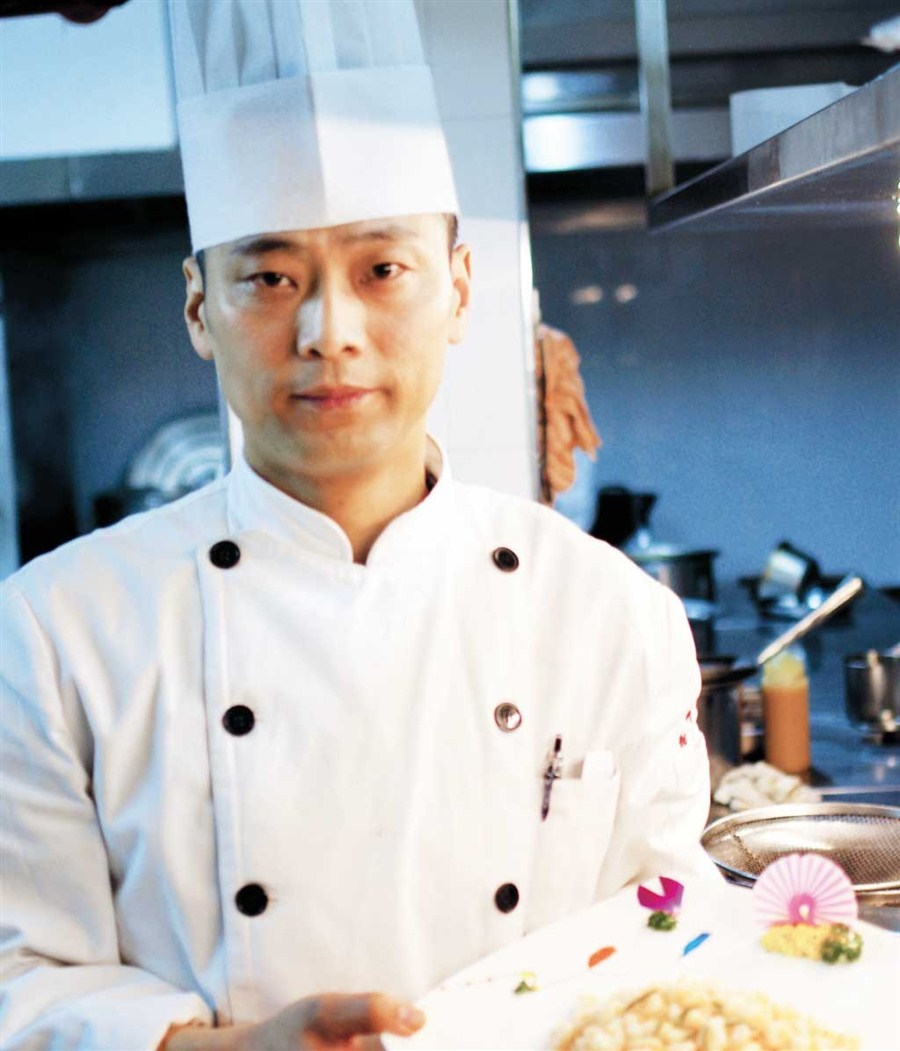At historic eatery, chef serves distinguished diners

GAO Zhenggang became a cook because his uncle, who worked as a chef, wanted to give his nephew a job. From such humble beginnings, Gao rose to become a leading figure in the Hangzhou dining scene.
“Pay attention. Always pay attention, that’s the secret,” said the 45-year-old. “Treat customers as if they’re family.”
Although never formally trained in the culinary arts, Gao ascended the ranks of his profession to eventually become the executive chef at Louwailou, a well-known Hangzhou restaurant with 169 years of history.
Louwailou was founded by a local couple during the Qing Dynasty (1644-1911). Started as a small restaurant near the West Lake, it quickly earned a name for itself thanks to its delicious aquatic dishes. Over its history, the restaurant has served notable figures such as Dr. Sun Yat-sen, former Kuomintang leader Chiang Kai-shek and famous writer Lu Xun.
From the 1950s it began welcoming foreign heads of state during visits to scenic Hangzhou. To this day, it is considered one of the most famous restaurants in the city.
When Peng Liyuan, the wife of President Xi Jinping, invited the spouses of G20 leaders attending the Hangzhou summit for luncheon, they enjoyed classical Hangzhou cuisine at Louwailou. Gao was one of the five master chefs who decided the menu of this important meal.
“We wanted to present the most authentic Hangzhou dishes to them, just as we offer to every Louwailou customer,” said the chef.
Gao explained that they brainstormed five main courses for these distinguished guests. One dish, Sister Song’s Fish Broth, was made according to the thousand-year-old recipe: steam Mandarin fish, then boil the meat with ham, shitake mushrooms, bamboo shoots and chicken soup.
Another Hangzhou’s classical served to the guest was Beggar’s Chicken. This dish was said to have been invented by a starving beggar during the Qing Dynasty. As the story goes, the beggar stole a chicken, wrapped it with lotus leaves and then stashed in the mud along a riverbank.
He returned to retrieve it at night and, lacking any other way to cook it, placed the entire bird directly onto an open fire. A clay crust was formed as it cooked, but with light pressure it cracked away, exposing juicy tender meat and the delicious aroma of lotus leaves. Another favorite local dish is Crab-flavored Fish Vermicelli, which features boneless noodle-like strips of sautéed fish meat.
To satisfy foreign tastes, shrimps were served with two sauces, curry and a local fermented soy bean sauce. A vegetable course named Moon above Lotus Pond was made of local bamboo shoots, lotus roots, and pumpkin prepared in the shape of a moon.
“During the months-long preparations, everyone was excited and a bit nervous,” said Gao, adding the team had five rehearsals before the banquet.
Having worked at Louwailou for over 20 years, Gao said he and the restaurant insist on making traditional Hangzhou dishes.
“Some restaurants call themselves Hangzhou restaurants, yet they actually make dishes fusing flavors from the country’s other cuisines to please non-local customers,” he said.
“We also innovate, but only by updating ingredients and cooking techniques,” said the chef. For examples of this, he pointed to the restaurant’s use of higher-quality fish and chicken, as well as a machine to make smoother fish paste for fish balls.
“The timing, composition of ingredients and weight all remain the same, so the Hangzhou taste does not change,” he said.
Delicious start to Spring
As Chinese New Year is coming soon, Shanghai Daily asked Chef Gao Zhenggang to share an easy Hangzhou recipe with our readers. Here’s how he prepares Longjing Shrimp:
• Buy 500 grams of peeled river shrimp, each of them should be the size of a one-jiao coin. Dethaw the shrimp, wash and drain;
• Add 8 grams of salt to the shrimp, and 10 grams of egg white, stir by hand;
• Add 8 grams of starch, stir by hand;
• Put the shrimp into the refrigerator for one to two hours. Meanwhile make a cup of green tea;
• Heat a pan, add oil and sauté shrimps till the ingredients are almost cooked;
• Add a few drops of green tea, add a few wet tea leaves, keep sautéing for 10 seconds.
- About Us
- |
- Terms of Use
- |
-
 RSS
RSS - |
- Privacy Policy
- |
- Contact Us
- |
- Shanghai Call Center: 962288
- |
- Tip-off hotline: 52920043
- 沪ICP证:沪ICP备05050403号-1
- |
- 互联网新闻信息服务许可证:31120180004
- |
- 网络视听许可证:0909346
- |
- 广播电视节目制作许可证:沪字第354号
- |
- 增值电信业务经营许可证:沪B2-20120012
Copyright © 1999-2025 Shanghai Daily. All rights reserved.Preferably viewed with Internet Explorer 8 or newer browsers.


